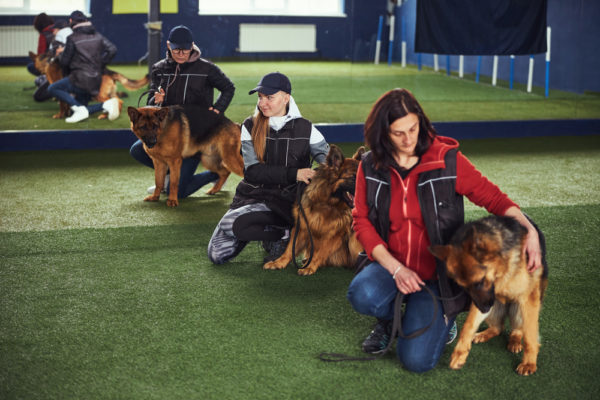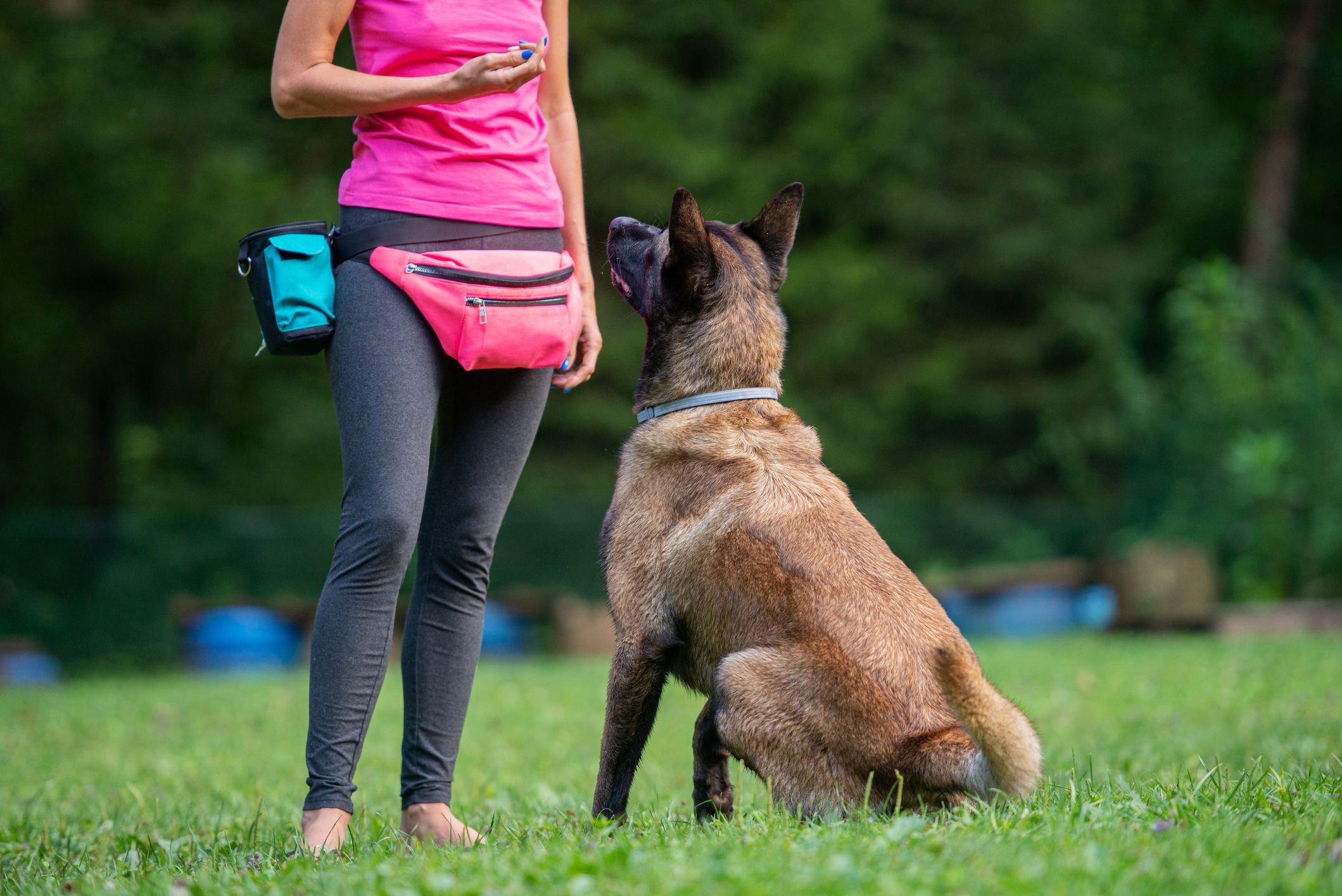Start Your Dog's Journey with Puppy Training That Builds Trust and Respect
Start Your Dog's Journey with Puppy Training That Builds Trust and Respect
Blog Article
Transform Your Canine's Habits With Proven Training Approaches
Changing your pet dog's habits calls for a nuanced understanding of their individual traits and demands, as well as the application of tested training methods. Uniformity in your training approach not only boosts obedience however also fosters a much deeper bond of trust fund and regard between you and your pet dog.

Comprehending Canine Habits
Recognizing canine behavior is essential for efficient training and interaction between people and their canine friends. Dogs, as social animals, show a series of habits affected by genes, environment, and experiences. Recognizing these actions helps owners tailor their training approaches to fulfill the specific demands of their canines.
Key aspects of pet dog habits consist of body language, articulations, and social interactions. Furthermore, socialization plays a vital duty in forming habits; canines that communicate positively with other pets and different people are usually much more versatile and well-adjusted.
Additionally, identifying anxiety signals-- such as panting, avoidance, or pacing behaviors-- can protect against rise into more severe problems. Proprietors that are attuned to their dog's habits can create a nurturing and risk-free atmosphere, fostering trust fund and improving the training process. Inevitably, a deep understanding of canine habits lays the foundation for an unified partnership and efficient training end results, making sure both canines and their proprietors prosper together.
Favorable Reinforcement Strategies
Positive support techniques are widely identified as one of the most efficient methods for training pet dogs, fostering a favorable understanding environment. This technique involves satisfying desired habits with treats, appreciation, or play, thereby motivating the dog to repeat those actions (Dog training). Unlike punitive techniques, favorable reinforcement develops depend on and reinforces the bond between the fitness instructor and the pet
Benefits need to be given promptly complying with the desired actions to assist the pet dog make the connection. Uniformity is additionally crucial; using the same commands and rewards aids the pet comprehend what is anticipated.
It is necessary to keep in mind that positive reinforcement is not about bribery; instead, it is about reinforcing etiquette. Gradually, as the pet dog learns to link certain actions with positive end results, the regularity of rewards can be gradually decreased, transitioning to verbal appreciation or periodic rewards. This method not just motivates obedience however also promotes a happy and confident canine, making training a more enjoyable experience for both celebrations involved.
Resolving Common Problems
Dealing with usual problems throughout canine training is necessary for guaranteeing a successful and harmonious relationship in between the pet dog and its proprietor. Lots of dog proprietors experience behavior challenges, such as too much barking, jumping, and chain drawing. Recognizing the source of these habits is essential for reliable training.
To reduce this, provide enough physical workout, mental excitement, and chances for social interaction with both people and various other pets. Educating the pet to sit upon greeting can redirect this habits favorably.
Chain pulling is another prevalent issue, frequently arising from a dog's eagerness to explore. Utilizing proper chain handling strategies, incorporated with training methods that encourage loose-leash strolling, can dramatically boost this actions.
Additionally, concerns like source guarding or splitting up stress and anxiety need tailored methods. Steady desensitization and counter-conditioning can be reliable in addressing these obstacles. By identifying and proactively handling these common issues, pet proprietors can cultivate a more enjoyable training experience and strengthen the bond with their canine companions.
Consistency in Training
Uniformity is a foundation of effective pet training, as it establishes a clear framework for the pet to understand habits and expectations. When signs, commands, and incentives are applied evenly, pet dogs can much more readily comprehend what is required of them. Irregular training can lead to complication, resulting in unwanted habits that discourage both the fitness instructor and the dog.
To accomplish consistency, it is crucial that all participants of the house adhere to the same training approaches. Using the exact same spoken cues and hand signals guarantees that the pet gets consistent messages. Additionally, the timing of benefits and corrections should be constant; prompt reinforcement enhances the probability that the pet will link the actions with the outcome.
Furthermore, establishing a routine can even more boost consistency. go to my site Regular practice sessions, coupled with organized timetables for feeding, walking, and playtime, assistance pet dogs prepare for and recognize their setting, making them more responsive to training. Ultimately, consistency fosters a complacency and trust fund, encouraging pet dogs to find out more properly. By committing to an organized method, instructors can advertise favorable actions adjustments and cultivate a well-mannered friend.
Structure a Solid Bond
Exactly how can promoting a strong bond between a canine and its owner boost the basics training experience? A strong partnership improved trust fund and respect serves as the structure for efficient training. When a pet dog really feels protected in its link with its proprietor, it is more probable to display positive habits and be responsive to finding out. This bond encourages the pet to involve fully in training sessions, as it watches the owner as a resource of advice and support.

Additionally, a well-established connection can decrease anxiety and behavioral issues, as dogs are less likely to act out when they feel recognized and looked after. Prioritizing the advancement of a strong bond not only enhances the training experience yet likewise contributes to a better and more well-adjusted canine. Eventually, the trip of training changes into a collective collaboration, resulting in lasting behavioral enhancements.
Final Thought

Proprietors who are attuned to their pet dog's behavior can produce a caring and safe atmosphere, promoting trust and improving the training procedure. Inevitably, a deep understanding of canine actions lays the foundation for a harmonious relationship and efficient training results, ensuring both canines and their proprietors prosper with each other.
Resolving usual issues during dog training is necessary for ensuring a effective and harmonious connection in between the pet dog and its proprietor (Dog training).Uniformity is a keystone of reliable dog training, as it establishes a clear framework for the canine to comprehend expectations and habits.In final thought, changing a pet dog's habits with shown training methods requires an understanding of canine behavior, the application of favorable reinforcement methods, and a focus on uniformity
Report this page